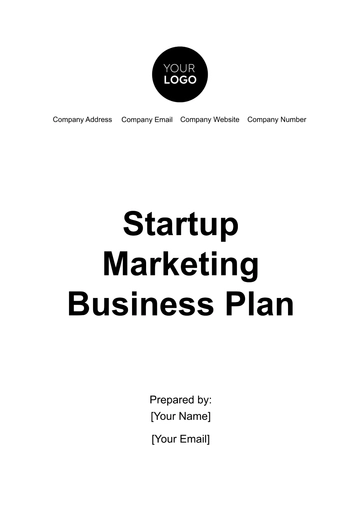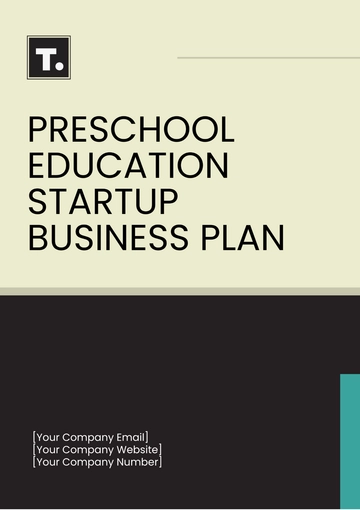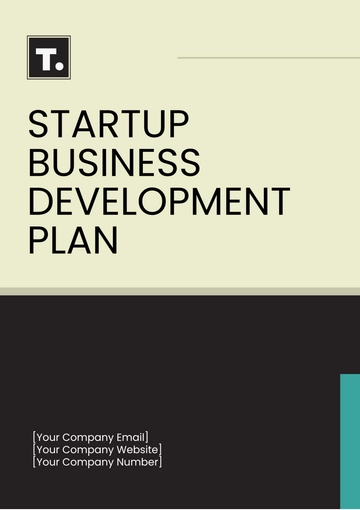Free School Startup Business Plan Format

Executive Summary
This section should summarize the entire business plan. It should provide an overview of your school, mission, vision, and key goals.
School Name: [Enter the name of your school]
Mission Statement: [State your school’s mission]
Vision Statement: [State your school’s vision]
Location: [Where the school will be located]
School Type: [Private, Charter, International, or Other]
Founders/Key Management Team: [List key people involved]
Goals and Objectives: [Highlight short and long-term goals for the school]
School Description
Provide a detailed description of your school, including its structure, teaching methodology, target market, and curriculum offerings.
School Type and Structure: [Describe the type of school – elementary, middle, high school, etc.]
Curriculum: [Details of the curriculum: local, international, STEM-focused, arts, etc.]
Target Audience: [Age group, demographics of students you aim to serve]
Unique Selling Proposition (USP): [What makes your school different from others?]
Programs Offered: [Extracurricular activities, sports, specialized programs]
Accreditations and Certifications: [List any necessary accreditations you are seeking]
Market Analysis
This section will analyze the market for your school, identifying potential competitors, community needs, and demographic trends.
Industry Overview: [General description of the education industry in your area]
Target Market: [Details on the demographic profile of your potential students and families]
Competitive Analysis: [Analyze other schools in the area and their offerings]
Market Trends: [Education trends in the region or globally that will impact your school]
Customer Needs and Preferences: [What parents and students are looking for in an educational institution]
School Operations Plan
Outline how your school will operate on a day-to-day basis.
School Location: [Provide the address or area where the school will be based]
Facilities and Infrastructure: [Details of the building, classrooms, technology, and facilities]
Hours of Operation: [School hours, days of the week, and holidays]
Staffing: [Teachers, administrators, support staff; hiring requirements]
Curriculum Delivery: [Teaching methods, classroom environment, technology use]
Safety and Security: [Plans for ensuring student safety]
Marketing and Sales Strategy
Detail how you will attract students to your school and build awareness.
Marketing Objectives: [Short-term and long-term marketing goals]
Branding Strategy: [How you will position your school in the market]
Advertising and Promotion: [Online marketing, print advertising, events, partnerships]
Partnerships and Collaborations: [Local businesses, other schools, community organizations]
Enrollment Process: [How students will apply and be enrolled]
Pricing Strategy: [Tuition fees, payment plans, scholarships]
Financial Plan
Provide detailed financial projections and funding requirements.
Startup Costs: [Initial expenses like building costs, equipment, licenses, marketing]
Revenue Model: [Tuition fees, government funding, donations]
Projected Income Statement: [Revenue, expenses, and profit for the next 3-5 years]
Cash Flow Statement: [Monthly projections of income and expenses]
Break-even Analysis: [When the school is expected to become profitable]
Funding Requirements: [How much capital you need to raise and for what purposes]
Sources of Funding: [Investors, loans, grants, personal savings]
Legal and Administrative Structure
Explain the legal aspects of your school, including licensing, insurance, and permits.
Legal Structure: [LLC, Corporation, Non-profit, or Other]
Licenses and Permits: [Any state, regional, or national permits you require]
Insurance: [Types of insurance needed – liability, property, workers’ compensation]
Compliance: [Adherence to local, state, or national education laws]
Milestones and Timeline
Set out the key milestones that need to be achieved in the first few years and a timeline for achieving them.
Pre-Launch: [Planning, securing funding, finalizing location, staffing]
Launch: [Opening the school, first day of classes, initial student intake]
Growth Phase: [Adding grades, expanding curriculum, scaling operations]
Long-Term Goals: [Expanding to additional locations, increasing enrollment]
Risk Analysis
Identify the key risks involved in starting the school and the mitigation strategies.
Market Risks: [Competition, economic downturn, changes in student demand]
Operational Risks: [Staff turnover, curriculum implementation challenges]
Financial Risks: [Cash flow issues, over- or under-enrollment]
Regulatory Risks: [Changes in education laws or accreditation standards]
Conclusion
Summarize the key points of your business plan and make a final pitch to investors or stakeholders.
Why This School Will Succeed: [Key reasons your school has a competitive edge]
Next Steps: [What actions are necessary to move forward]7
- 100% Customizable, free editor
- Access 1 Million+ Templates, photo’s & graphics
- Download or share as a template
- Click and replace photos, graphics, text, backgrounds
- Resize, crop, AI write & more
- Access advanced editor
Plan your new school venture with Template.net’s School Startup Business Plan Format Template. Customizable and editable, this template provides a clear framework for goals, funding, and operations. Editable in our AI Editor Tool, it ensures professionalism. Download it to create a strong startup business plan.
You may also like
- One Page Business Plan
- Coffee Shop Business Plan
- Restaurant Business Plan
- Food Business Plan
- Real Estate Business Plan
- Executive Summary Business Plan
- Cover Page Business Plan
- Nonprofit Business Plan
- Daycare Business Plan
- Construction Business Plan
- Startup Business Plan
- Medical Business Plan
- Bakery Business Plan
- Service Plan
- Hotel Business Plan
- Catering Business Plan
- School Business Plan
- Healthcare Business Plan
- Transportation Plan
- Sports Plan
- Car Wash Business Plan
- Salon Business Plan
- Clothing Business Plan
- Farming Business Plan
- Boutique Plan





























